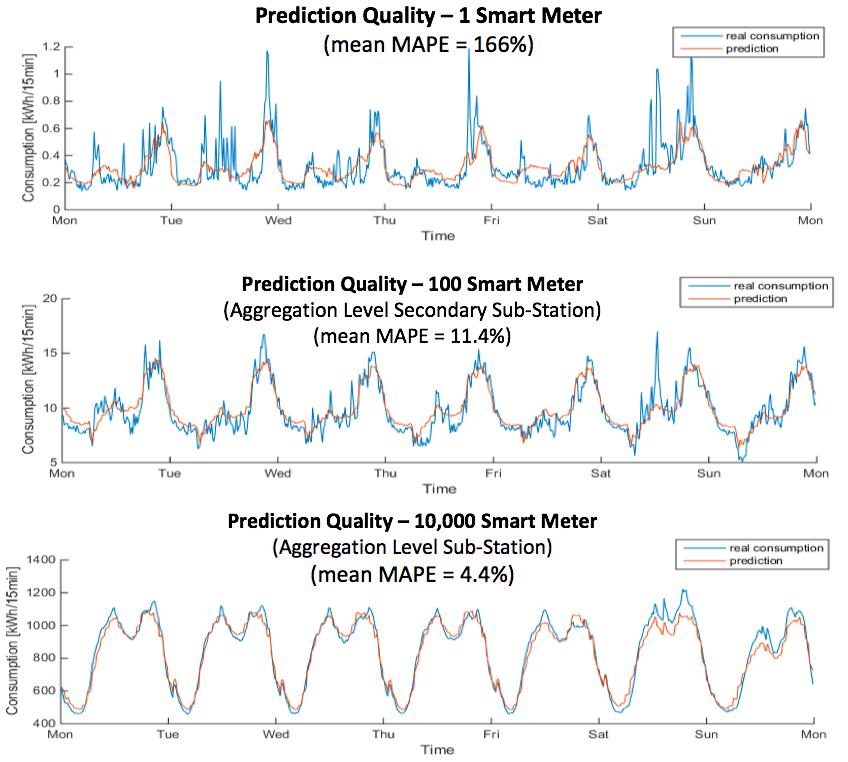Forecasting Local Consumption Patterns Based on Smart Meter Data and Neural Networks
The roll-out of Smart Meters in electric distribution grids allows grid operators to attain grid transparency, i.e. detailed visibility of the status of their grid infrastructure. Artificial neural networks are trained on Smart Meter data in order to provide highly localised yet accurate short-term predictions of both electricity consumption and photovoltaic production patterns.
The main motivation for this project was to showcase how Smart Meter measurement data can be used to provide an enhanced visibility, or grid transparency, of the electric distribution grid. While distribution grid operator are used to monitor energy flows on the medium- and high-voltage grid level, the low-voltage grid is still today in most operational aspects a ‘black box’, without any real-time knowledge of the grid status or potential grid problems. Improving grid visibility can lead to significant savings in distribution grid operation and planning.
However, electric utilities nowadays obtain ever more precise information from single consumers connected to the low- and medium-voltage grid thanks to Smart Meters. This allows a previously unattainable degree of detail in state estimation and other grid analysis functionalities such as the predictions of local electricity consumption and production patterns. This project focused on the use of Artificial Neural Networks for providing highly localized yet sufficiently accurate short-term predictions of electricity consumption and Photovoltaic production profiles. The prediction quality depends highly on the spatial aggregation level, i.e. the size of the grid area and the number of consumers that are aggregated. A power flow analysis confirmed the good prediction accuracy and, hence, the operational benefits of Smart Meter data prediction based on neural networks for providing grid transparency and supporting distribution grid operation.
Results of a data analytics project based on the Smart Meter data of more than 40,000 residential customers as well as several hundred PV systems in the City of Basel, Switzerland are presented.
Further project information is available.
external pageAdaptricitycall_made, an ETH spin-off since 2014 conducted this research together with the ESC Member Prof. Gabriela Hug and former ESC Member Prof. Göran Andersson. Prof. Hug is head of the Power Systems Laboratory (PSL), which comprises analysis and design of electric and integrated energy systems including their planning, design and operation. external pageIWBcall_made and the external pageSwiss Federal Office of Energiecall_made (SFOE) are partners.

